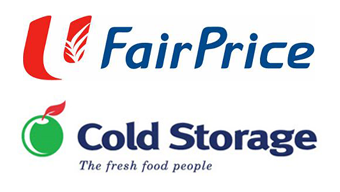I’ve been reflecting a lot on the similarities between the retail markets in Singapore and Australia. Both are dominated by two key retail players and both suffer similar issues as a result. Looking at these provides a great illustration of just how retail consolidation can wreck a consumer goods market.
1) Retailers get complacent
The lack of significant competition makes retailers complacent and perhaps more problematic limits the development opportunities for people working in retail which sustains the status quo.
The grocery retail sectors in both markets shows this. Both Singapore and Australia lack innovation and dynamism. In both markets grocery stores are dull and disappointing. Fresh food offers are surprisingly limited and packaged grocery fixtures are poorly merchandised. In both markets retailers claim to offer keen price points and yet Singaporeans and Australians alike pay more for food than most shoppers in the western world. In Singapore in particular online offers are poorly configured and many orders are poorly filled.
2) Consumer goods companies get stuck
With only two retailers to work with, both Singaporean and Aussie consumer goods companies have few places to go to distribute their brands. The big retailers therefore force the agenda. As they push price hard and limit the scope for inventive in-store activities sales and marketing teams get increasingly despondent.
As a result manufacturers’ creativity ebbs and talent moves elsewhere again sustaining the status quo.
 3) Marketing expenditure wasted.
3) Marketing expenditure wasted.
Sales teams in both markets complain of increasingly unreasonable demands for promotion support. Money is pumped into activities, such as poor quality press pullouts and in-store flyers which erode the equity of CPG brands whilst doing little to enhance the retailer’s positioning as anything beyond “cheap”.
One Australian sales manager complained to us recently that trade spend in Coles easily exceeded 25% of sales (the point at which most companies start loosing money). Whilst research we conducted in dairy showed less than 5% of the target market even read retailers’ ads or brochures.
Our research shows that up to 70% of trade expenditure could be wasted globally – nearly $200 billion a year for major consumer goods companies. Retail consolidation is likely to lead to this number growing in the future.
Consolidation is a global fact which affects every market to varying degrees and it requires marketers to do things differently. It’s time marketers stopped looking at trade spend as a cost of doing business and start think if this as a marketing investment.
To get a real ROI, this money needs to be focused on changing shopper behavior to drive greater consumption. Marketers need to focus on unexploited consumption opportunities and define the purchase behavior needed to realize these. Channel teams need to be far more granular in their identification of priority retail environment and spend in-store needs to be focused on behavioral change in these key environments.
